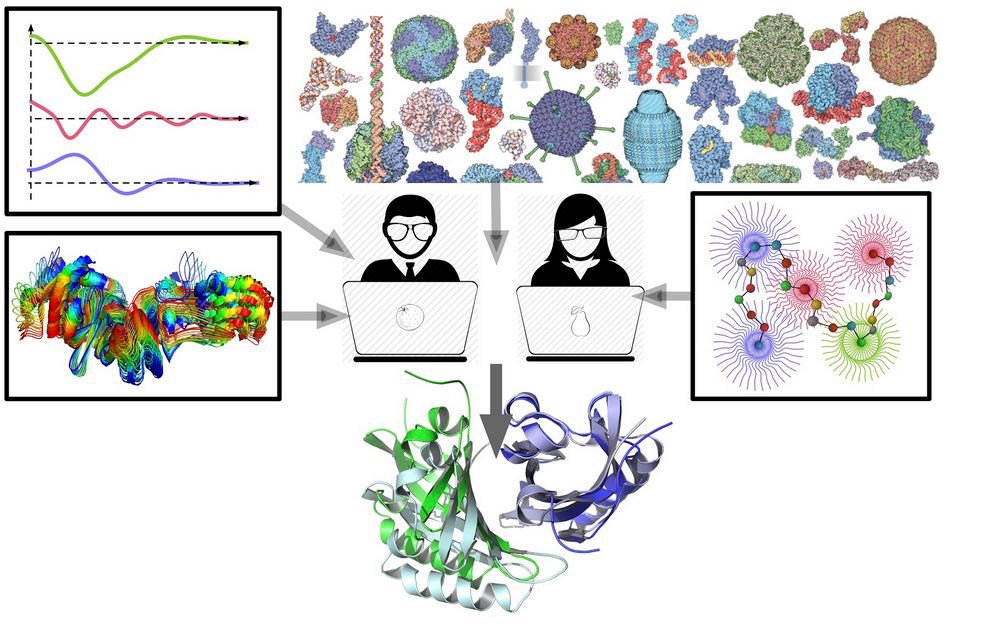Speaker
Description
Spread of antibiotic resistance genes by conjugative mechanisms represent a major public health issue. Among the elements involved in these horizontal genes transfers, mechanisms involving integrative and conjugative elements (ICEs) are the most common. The RelSt3 relaxase is a protein that binds to a sequence-specific dsDNA, and to the ssDNA region of a hairpin to cut it prior to its transfer. RelSt3 is active in the form of an homodimer, each monomer formed by 3 domains linked by highly flexible long loops
This complex presents several challenges for its modeling. For example, while the locations of the ssDNA nick site and the RelSt3 catalytic site are both known, the hairpin loop is highly flexible due to its single stranded nature. Thus its structure is not known, and moreover can change upon binding with the relaxase. Additionally, each RelSt3 monomer is made of three domains : the n-terminal “HtH” domain binding a sequence-specific double-stranded DNA, with a conserved fold; the central domain containing the catalytic site cutting the single-stranded DNA “nick site”, and for which an homologous structure is available; and the c-terminal domain, with an unknown fold.
Here, I want to expose the processes set up to build a model of this protein and of its interactions with ss- and dsDNA. The steps includes :
• Modeling of the protein domains; Of the three domains of RelSt3, two could be built by homology modeling. However the third, while consensually described as primarily organized in alpha helices, resist to our modeling attempts.
• Building of the dimeric core domain, based on the dimeric thomologous structure, which also lacks the n-terminal and c-terminal domains.
• Linking the domains; The three domains of RelSt3 are link to each other through long (10 and 13 aa) flexible linkers, leading? to a large conformational space. On the other hand, a precise location of these domain relative to each other is necessary to bind DNA accordingly onto known sites.
• Localizing the HtH domains relative to each other on dsDNA; It was experimentally shown that HtH domains interact with two short (13 nt) repeats, separated by a 9 nt spacer. Due to the symetric nature of the protein, it is suggested that the HtH domains interact with different repeats. This carries out additional constraints to take into account for their positioning on the DNA, relative to each other and relative to the central domain.
• Modeling the ssDNA conformation in contact with the protein; The precise interactions sites are known for both partners. But the fragment-based approach considered here, in which ssDNA sections are fragmented into 3-mers for an efficient docking, was developed for ssRNA/protein docking. It is limited here by the low number of ssDNA/protein complexes in the PDB used to build a fragment library, compared to dsDNA/protein complexes.
The main objective is to open a discussion on some of the challenges encountered during the steps presented above with the people present at the workshop, about ways to overcome them.

